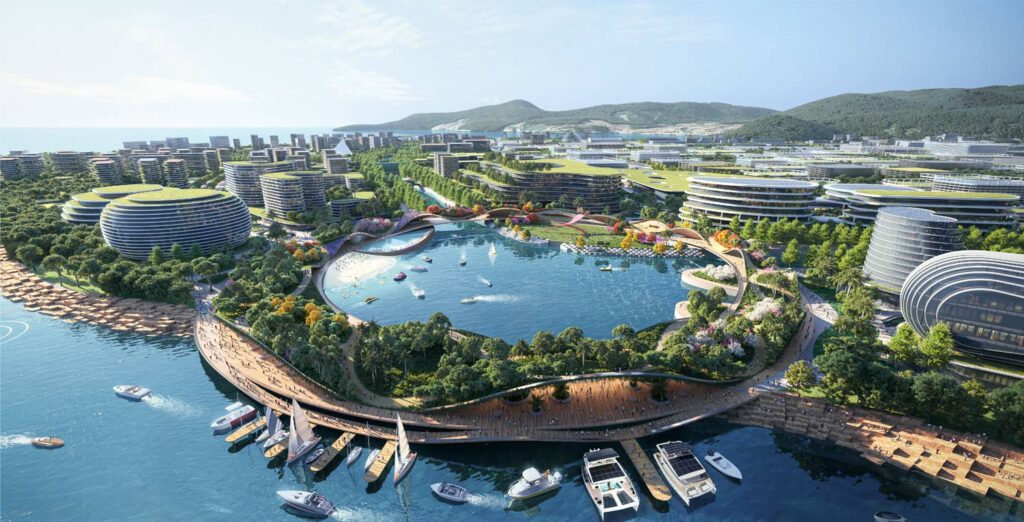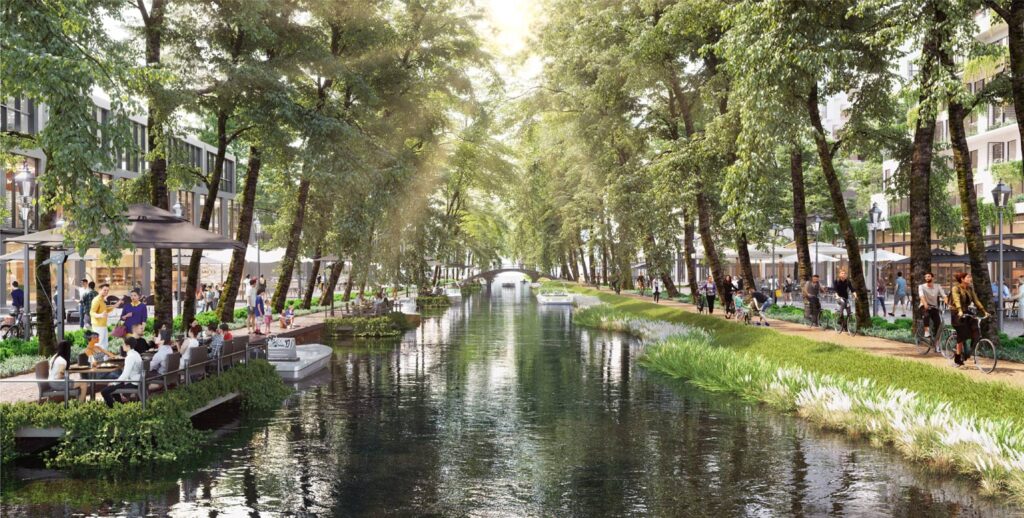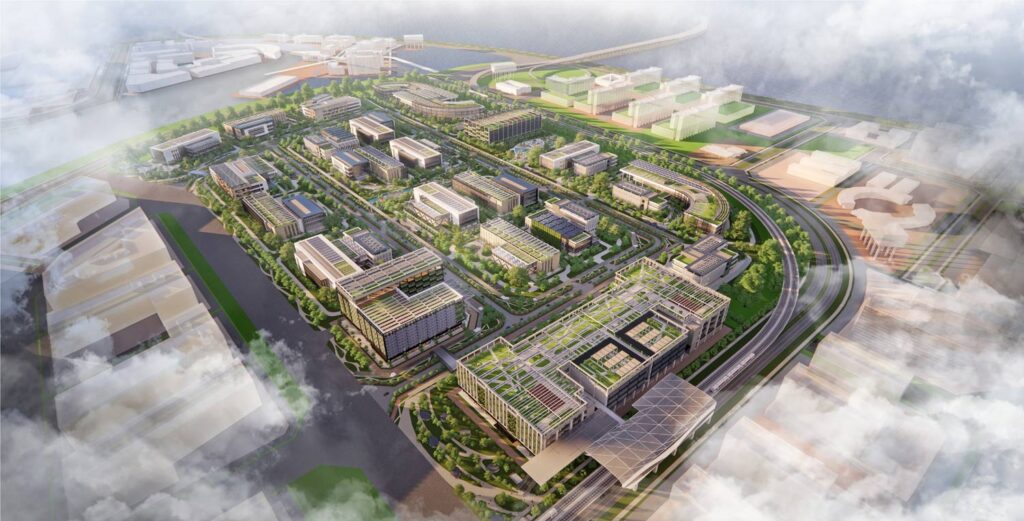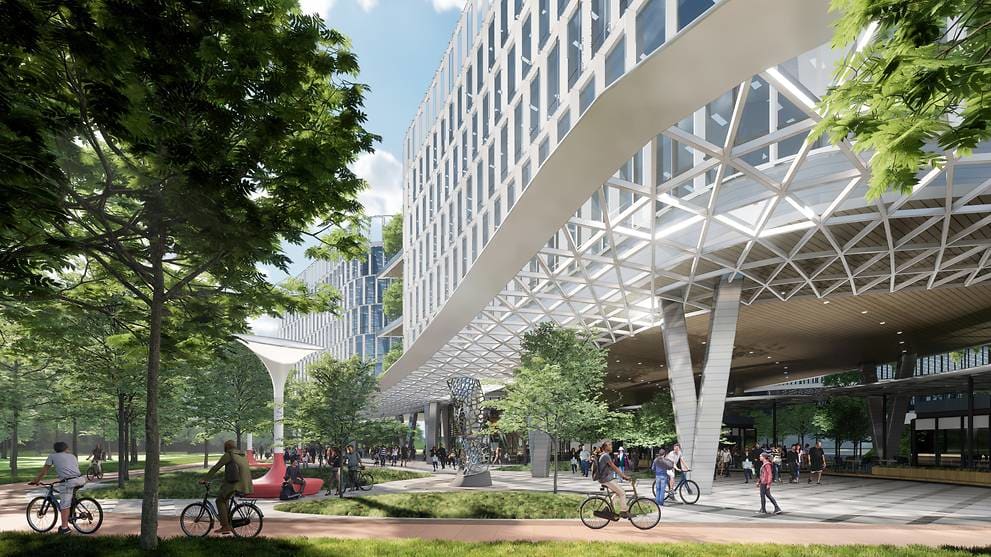Penang South Islands: Making a green mark on the global stage
A sustainable eco-system in Malaysia for work and play, the Penang South Islands project is looking to be the next Silicon Valley.

Imagine a sustainable township that features car-lite options, water canals plied by eco-friendly water taxis, energy-efficient power systems and green buildings, and tech-forward company campuses lining the streets. That is the utopian vision of the Penang South Islands (PSI) project, a new urban development that encompasses work sites and homes off the coast of the Malaysian state.
“PSI is meant to be an Internet of Things (IOT)-enabled smart city to complement Georgetown – one that’s modelled on sustainable and green living, incorporating environmental, social and governance (ESG) principles, with the aim of creating a top investment destination in the region,” said Penang Chief Minister Mr Chow Kon Yeow.
Among its green ambitions, PSI aims to achieve a 50 per cent reduction in CO2e emissions compared to ‘business as usual’ by 2030. This will be accomplished through various means, including a 40 per cent reduction in urban planning emissions and an 80 per cent reduction in transport emissions. For those who will work and live there, this would mean no traffic jams, reduced air pollution and a cleaner living space.

More than 20 per cent of the land will also be set aside for open spaces, parks, beaches and esplanades, all of which will be accessible to the public. In addition to open green spaces, canals and coastal buffers will serve as flood retention basins as part of the urban stormwater management system.
Silicon Valley of the East
Penang already enjoys a good reputation. The state is known as the Silicon Valley of the East and has the highest gross domestic product per capita among Malaysian states. It also has a youth literacy rate of 99.5 per cent as of 2014, making it a great place for MNCs to set up operations.
Global technology giants such as Micron, Motorola, Intel and National Instruments are already engaged in high-value, high-tech activities present in Penang, with many situated at the Bayan Lepas Free Industrial Zone. With its focus on sectors such as software and integrated circuit design development, as well as chip product manufacturing, PSI will make an ideal location for tech firms to expand their footprint in Penang.
The PSI project will see 1,820ha of space divided into three man-made islands – Island A (930ha), Island B (566ha) and Island C (324ha).
Some 15,000 job opportunities are expected to be created once the reclamation of Island A starts. The island will be where an industrial zone called the Green Tech Park is to be built, with vacant possession ready by 2024. This 283ha development will provide a sustainable environment that will not only be a place for existing businesses to expand, but also provides a location for new businesses to establish themselves in Penang, amongst the robust ecosystem that has been in place over the past 50 years.

The GTP will also be accessible to residential, commercial and recreational facilities – key features to attracting and retaining talent, something that is high on the priority list of companies when considering venturing or expanding into a new location.
Island A will see an array of world-class tourist attractions such as botanical gardens, aquarium and underwater museum, waterfront esplanade, fishermen wharf and other exciting attractions, complementing the old-world charm of Georgetown.
A green initiative
The project is set to be built against a robust PSI Green Plan. Mr Chow shared that the project will be supported by sustainable master planning, smart mobility, renewable energy, super low energy (SLE) building technology, smart features, as well as efficient waste and water management.
Gamuda, the construction company in charge of the project, has benchmarked against best practices in accordance with ESG principles.

“Embracing ESG principles will position PSI on a global stage in an environment where investors are looking at their investment’s wide-ranging impact in various ways, beyond the straightforward financial returns,” explained Mr Chow.
To promote green mobility, everything on PSI is designed to be within easy reach to “put bicycles and pedestrians ahead of cars”. Together with the seamless integration of public transport modes such as water taxis, e-trams and LRT, this move will help to reduce carbon emissions.
The planners have envisioned a wide range of incentives to coax more residents into embracing low-impact mobility. “The development is aimed to be carbon-neutral, climate-resilient and highly livable, right from the start, and this can be seen in how the masterplan and integrated transportation network are sustainably laid out on the PSI,” said Mr Chow.
Meanwhile, power consumption on PSI will be moderated using smart grids, buildings that rely on energy-efficient cooling systems, and a host of other smart tech features that optimises cooling, ventilation, lighting, irrigation and security systems to make this built environment a low-impact one.

PSI will also employ green building designs that embrace passive cooling through the alignment of the city grid and buildings to prevailing winds. This essentially creates a wind tunnel effect to maximise natural ventilation and reduce the dependence on air conditioning.
Find out more about the Penang South Islands project.

